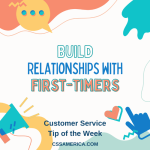
When I was growing up, I would hear the phrase Listen Up frequently. It was usually being stated by adults who wanted to get the attention of a group of kids. It was usually stated loudly. It usually worked. At least for a minute or 2.
As an adult in the working world, I now find myself in customer service situations or advising clients on how to create a great customer experience. And while the phrase Listen Up has not lost its importance, it means something different today. Today, in business it relates to what employees should do with co-workers and customers. It suggests that in order for us to really solve a problem or address a need or resolve an issue, we have to be experts at listening.
So, what do experts at listening do most effectively?
They watch to observe and interpret the body language as much as they do the words. I was in a meeting recently where we were discussing certain individuals in the organization, and we were trying to uncover how they felt about a situation; it turns out that most of our conclusions were being driven by the body language they conveyed in meetings when the topics were discussed.
Experts at listening are experts at asking questions. They start with open-ended questions to let the other person share their issue, need, goal, their story or perspective. Then the listener drills down to specifics with close-ended questions to refine their understanding of the situation and the impact of potential solutions.
Listening experts let the other person talk. It seems obvious to say, but how can you listen if you’re doing all the talking? People who are great at listening let the other person talk 70-80% of the time – hearing the other’s perspective and guiding the conversation with those questions asked.
Great listeners are great at paraphrasing. They’ve listened so well that they can pause the conversation and – in their own words – explain the situation, the steps, the goals, and the desires conveyed by the other person. They can translate the body language, tone, the words and emotions of another.
Keep in mind that great listeners are often considered to be great conversationalists because the discussion flows, and the other person gets to share, feels comfortable doing so, and is speaking with someone who has an empathetic ear.
The art of listening is key to great conversations and great customer service.
Listen Up!
Signup for FREE Tips! Contact Us More Resources for You Visit Our Home Page























